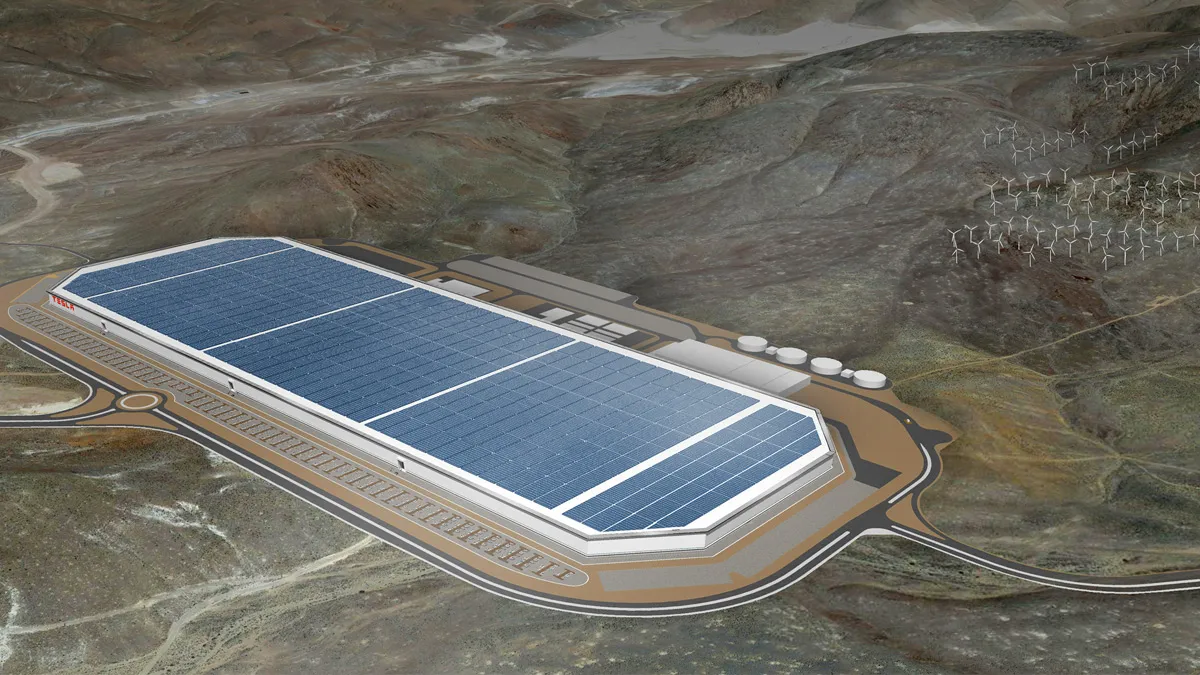Dive Brief:
- Tesla's earnings report this week included details that the company expects to finalize the locations for two more factories this year, signaling a long-term growth strategy for the transformational energy company.
- Production of batteries at Tesla's first factory in Nevada, the much-heralded Gigafactory, began last month and is expected to produce 35 GWh/year of lithium-ion battery cells by 2018.
- The company expects to roll out the Model 3 electric vehicle and solar roof energy resources in the second half of this year. And Tesla has developed a plan to reduce customer acquisition costs by cutting ad budgets, selling solar products in Tesla stores, and shifting away from leasing solar systems.
Dive Insight:
Tesla posted mixed results in the first earnings data seen since the company acquired SolarCity last year. The company will be producing 5,000 Model 3 cars a week by the end of the year, but as Bloomberg points out, will also likely need to raise more cash. The company announced 2016 revenue of $7 billion, up 73% from 2015.
But the big news is likely that Tesla has plans for two additional factories, and possibly even more. Its first, the Gigafactory in Nevada, is just ramping up operations, and the company considers SolarCity's factory in New York to be its second. Now, it appears the company has plans to more than double production.
"Later this year, we expect to finalize locations for Gigafactories 3, 4 and possibly 5," the company said in its earnings statement.
Last year, Tesla purchase SolarCity, the nation's largest solar panel installer, making it the "world’s only integrated sustainable energy company, from generation to storage to transportation," according to the company. With that deal complete, Tesla will not look to reduce customer acquisition costs, and will prioritize cash preservation over growth of megawatt deployments.
But looking ahead, the company said that "as this transition progresses, we see a return to growth of MW deployed later this year to help us generate the cash and realize the cost synergies we projected prior to the acquisition."














